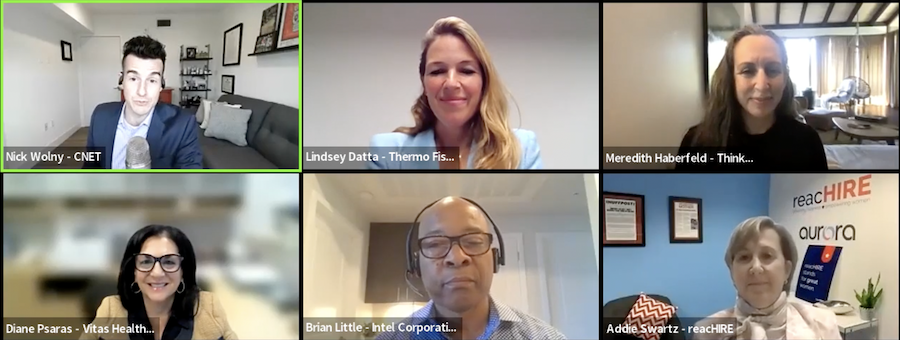How Employers Are Boosting Internal Mobility


Who you hire may not matter so much as how you onboard and develop them along the way.
In a rapidly changing world, internal mobility plans continue to be a powerful motivator for managers and employees alike. Skill sets for jobs have changed by 25% since 2015, and that number is expected to double by 2027, according to the latest LinkedIn Workforce Learning Report.
Reaching into untapped workforces and properly developing new talent can lead to higher-performing teams, said Addie Swartz, CEO & founder of reacHIRE, a workforce consulting company.
“For many different reasons, women often need to sideline their careers, and some men too,” Swartz said. “And these people represent an untapped talent pool that could really be fully utilized in corporations if they were given the right training, support, upskilling, and opportunities.” Swartz founded her company after a car accident involving her family forced her to step out the workforce to care for her daughter; along the way, she met many other skilled women who also wanted to eventually return to the workforce, and discovered a reskilling gap.
Leadership professionals need to pull multiple levers to win the present-day talent war, which is why streamlining internal mobility was the subject of a recent From Day One panel titled “How Employers Are Boosting Internal Mobility.”
Start With Your Leaders
At a time when stakeholders are figuring out how to achieve more with less, investing in leaders is “the gift that keeps on giving,” said Meredith Haberfeld, founder and CEO of ThinkHuman, a leadership consultancy.
“If leaders are focused on developing others, it's not all on HR and L&D to make that happen,” she added. Haberfield’s company uses a cohort model, which helps to create a support system that continues on after engagements are complete. “Learning journeys only last a certain amount of time. There's merit in one-on-one coaching for sure, but in a cohort we create this leadership community that then continues after that experience.”
Mapping out longer career roadmaps can further standardize and hardwire development efforts, said Lindsey Datta, vice president of human resources for Thermo Fisher Scientific.
Career roadmapping “allows for customization,” Datta said. “Working on a solid plan to help individuals in a variety of different ways ensures the right experiences on the job.” Datta shared about Thermo Fisher Scientific’s gigs initiative, which lets employees explore other areas of the company by being assigned to projects that provide five to 10 hours per month of exposure.
“A lot of people are really unsure. They don't know if they want to go into product management, or marketing. We are trying to give people a taste of that, so they don't have to say, ‘Okay, let me uproot my current career and make a huge transition,’” she added.

HR professionals should also keep up on technology advancements like artificial intelligence to help assuage fears among staff that jobs or opportunities will be automated away, said Brian Little, vice president of human resources for Intel.
“What you're seeing today is only the very tip [of AI], and it's going to change a lot more,” Little said. “From an HR perspective, AI today is something like a really good helper. It helps you screen resumes. From an employee benefit perspective, being able to see and diagnose challenges or opportunities you already have is good. But the bias is there.” Little cautioned that technologies like AI should be leveraged more to help, rather than replace, to ensure the human element isn’t lost in important initiatives.
How to Engage Employees at All Levels
To avoid siloing your development efforts to leadership only, consider connecting employees of all job titles to various business initiatives, said Diane Psaras, executive vice president and chief human resources officer at Vitas Healthcare.
“The most impactful way we've been able to drive engagement at all levels and customize what folks get out of it has been through involvement in the business,” Psaras said.
“We also look at what skills individuals need to build. They learn so much about various dimensions of the business, as well as acquire skills on how to influence other people's perspectives and present to an executive audience, with respect to their own ideas,” she said. “Those two things have really gained a lot of momentum, and have gotten the most excitement from our employees.”
Internal mobility is critical for sustained business success. But learning and development cannot be isolated to upper management alone. Incorporate a coaching and learning culture throughout your organization and you’ll walk away with a more resilient workforce.
Nick Wolny is an editor, journalist, and consultant. Currently a senior editor at CNET, he has previously written for Fast Company, Fortune, Business Insider, and OUT Magazine, and is a frequent television commentator on technology and work life. He is based in Los Angeles.
The From Day One Newsletter is a monthly roundup of articles, features, and editorials on innovative ways for companies to forge stronger relationships with their employees, customers, and communities.